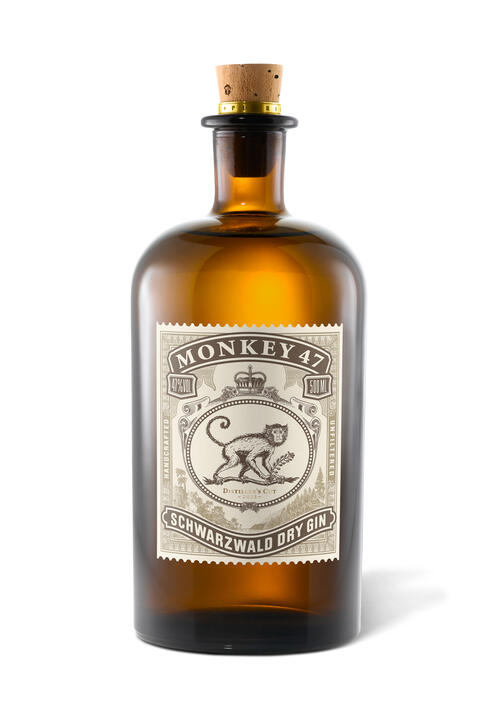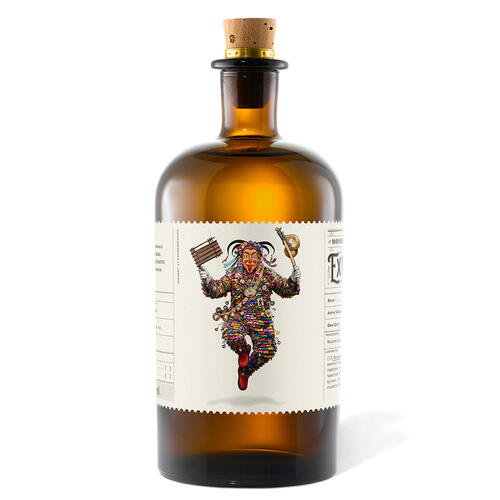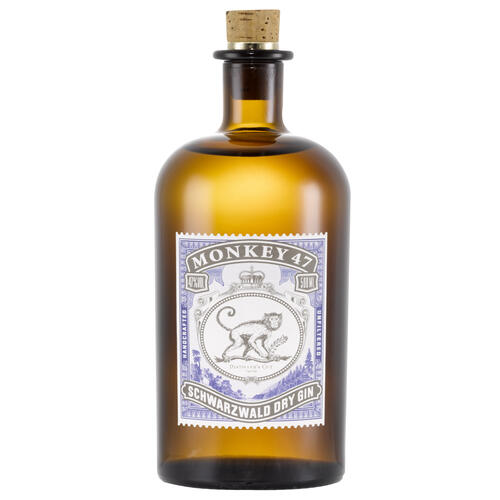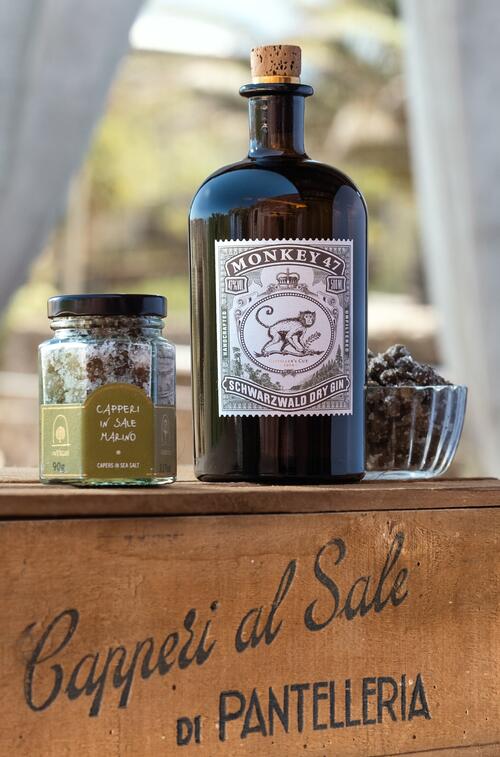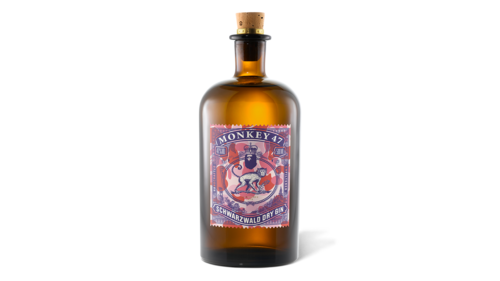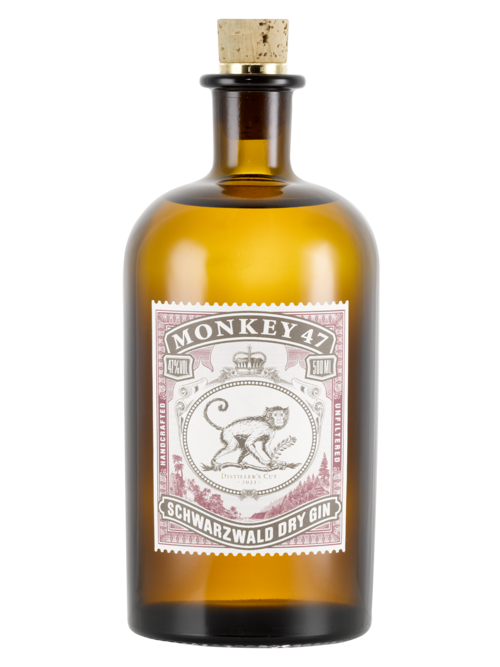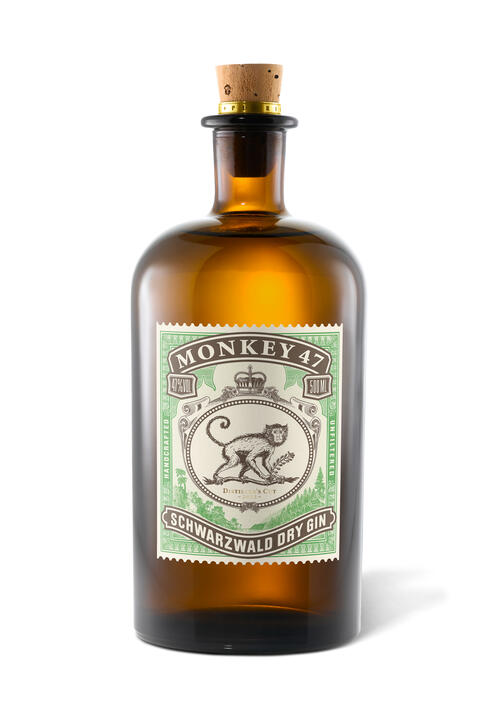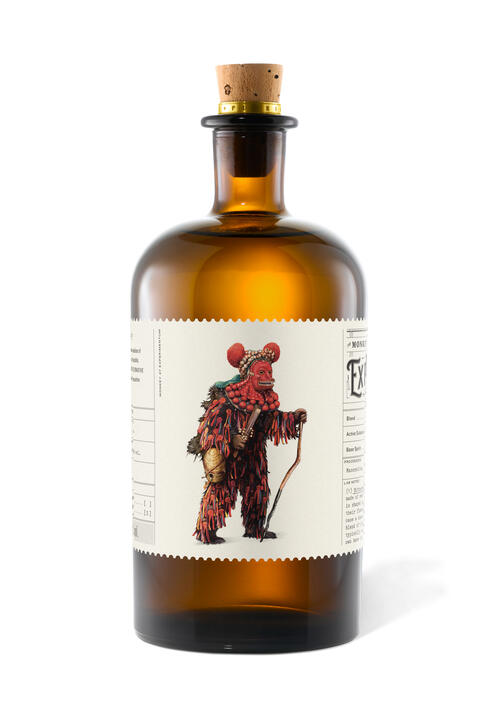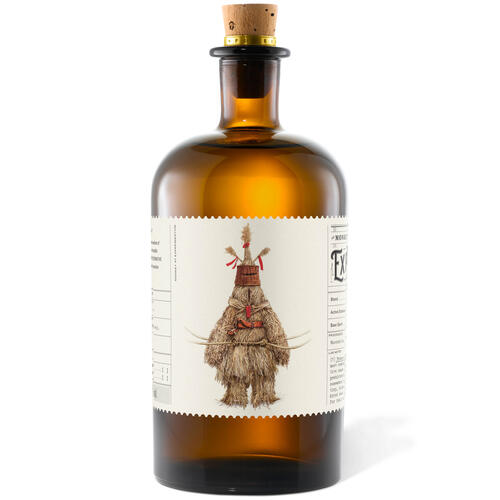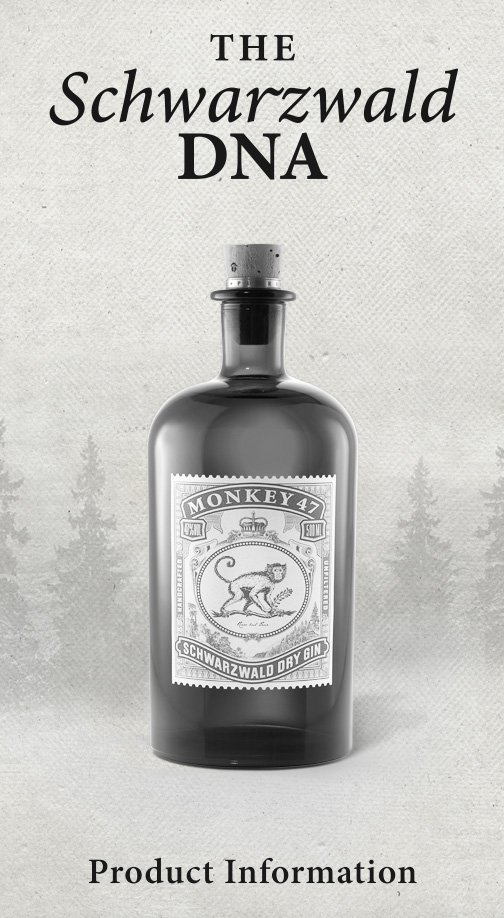Milton's Titi
Plecturocebus miltoni
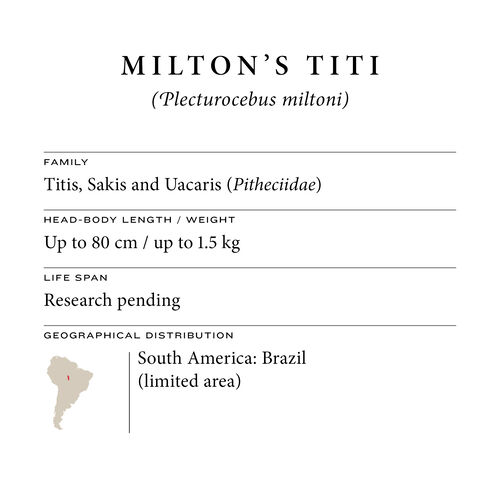
HABITAT
Milton’s Titis live only in a small area of lowland rain forest between the Roosevelt and Aripuanã rivers. The species was discovered just recently in 2010 and described scientifically in 2015. At the time, a WWF expedition seeking to establish new protected areas found its way into a nearly untouched region between the two rivers – the habitat of Plecturocebus miltoni. “These days, an expedition that leads to the discovery of a new species of mammal is quite rare,” a WWF Deutschland official said. “In the 21st century this hardly ever happens.”
BEHAVIOUR
These tree-dwelling primates live in small family groups consisting of a monogamous pair and their offspring. They are often observed sitting or sleeping with their tails entwined. Most recognisable by their bushy, fiery-red tails, Milton’s Titis communicate with one another by means of loud long-distance calls. These calls are especially loud and frequent during the rainy season, which is likely related to the need to defend the trees that provide the animals’ food.
NUTRITION
Above all, these agile monkeys favour the sweet fruits of cocoa trees, Inga plants, and Cecropia trees.
REPRODUCTION
Research is still pending, but all other Titi Monkeys form monogamous breeding pairs. Males also take care of the single offspring by carrying them.
STATUS
IUCN RED LIST
Not yet evaluated
POPULATION
The exact figures are not yet known.
THREATS
Given that the already limited habitat of the Milton’s Titi continues to decline, one can assume that the species is threatened with extinction. Its habitat is bounded by rivers and deforestation activities are advancing from the south, leaving the monkeys with no way to retreat to other areas. Milton’s Titis live in an area spanning 4.9 million hectares.
CONSERVATION
WHAT WWF IS DOING TO PROTECT THE SPECIES
– Habitat protection by improving the management of the Mosaico da Amazonia Meridonial (MAM) comprising different protected areas through direct cooperation with local communities
– Establishment of alternative sources of income such as Brazil nuts and oils obtained from the forest
– Advise and positively influence environmental policy in order to impede further deforestation both within and outside of the relevant protected areas and indigenous territories (agriculture, mining, and hydroelectric plants are the main drivers of deforestation)
Stay tuned. We are going to reveal more in the next couple of days! Sign up for our Monkey News here!




